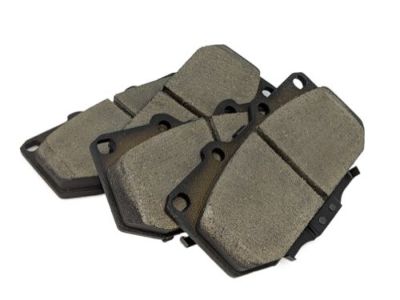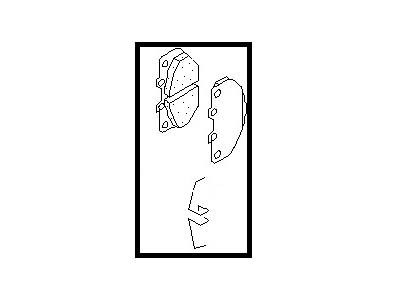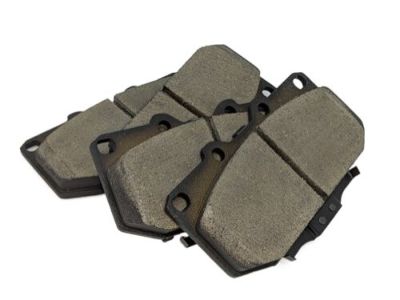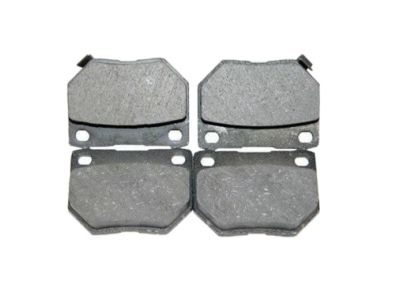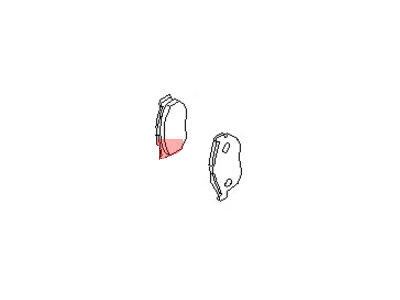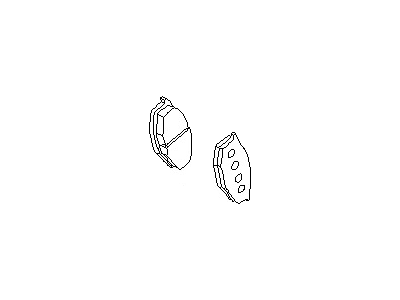×
- Hello
- Login or Register
- Quick Links
- Live Chat
- Track Order
- Parts Availability
- RMA
- Help Center
- Contact Us
- Shop for
- Nissan Parts
- Nissan Accessories

My Garage
My Account
Cart
Genuine Nissan 300ZX Brake Pad Set
Disc Brake Pad Set- Select Vehicle by Model
- Select Vehicle by VIN
Select Vehicle by Model
orMake
Model
Year
Select Vehicle by VIN
For the most accurate results, select vehicle by your VIN (Vehicle Identification Number).
17 Brake Pad Sets found

Nissan 300ZX Front Disc Brake Pads Kit
Part Number: 41060-40P90$83.41 MSRP: $112.75You Save: $29.34 (27%)Ships in 1-3 Business Days
Nissan 300ZX Rear Disc Brake Pad Kit
Part Number: 44060-43P85$85.17 MSRP: $123.35You Save: $38.18 (31%)Ships in 1-2 Business Days
Nissan 300ZX Disc Brake Pad Kit
Part Number: 44060-01P93$83.41 MSRP: $112.75You Save: $29.34 (27%)Ships in 1-3 Business Days
Nissan 300ZX Brake Pad Set
If you need any OEM Nissan 300ZX Brake Pad Set, feel free to choose them out of our huge selection of genuine Nissan 300ZX Brake Pad Set. All our parts are offered at unbeatable prices and are supported by the manufacturer's warranty. In addition, we offer quick shipping to have your parts delivered to your door step in a matter of days.
Nissan 300ZX Brake Pad Set Parts Questions & Experts Answers
- Q: How do you replace the front and rear brake pads on Nissan 300ZX?A:To replace the front brake pads, first jack up the vehicle and place it securely on jack stands and then remove the front wheels. Then, unbolt the lower pin retainer bolt of the front Brake Caliper while swinging the caliper up to slide off the brake line retaining clip at the hose bracket on the strut. To gain access to the brake pads you will have to raise the caliper body up further, and then remove both the inner and outer shims with a view of noting the placements that they occupied. Gently removal of the brake pads must be done by avoiding the application of the brake pedal. If the pads are glazed, damaged or worn, they must be replaced and ideally all four pads on the axle must be replaced at the same time, using the same material. Remove the pistons and clean the end of the piston and pin bolts with brake fluid and not the mineral based solvent. Coat the contact surfaces between the torque member and the pads with silicone-based greases and install the retainers and pads back, make sure that the grease does not touch the friction areas. Secure the piston with a small C clamp Arrange the reservoir fluids in a way that they do not spill out when the the piston is compressed. Lower the caliper body little by little and fit the lower pin bolt in the hole provided for it and tighten it up to the standards. Push the brake pedal several of times to allow the pads to wear in before reinstalling the wheels, and lifting the car off the jackstands. To change rear brake pads, lift the vehicle and set it on jack stands and unbolt the emergency brake cable at the turn buckle of the adjusting type. Pull off the cable retaining spring clip and take the emergency brake cable end out of the retaining bracket. Pop the lower caliper retaining pin and lift the caliber; do not second that this caliper will open fully as a result of hydraulic brake hose. Cautomatically to the fully assembled position and remove the pads with the shims attached Lift out the pad retainers wash the parts in brake fluid. It is advisable to apply silicone based grease on the contact areas before fixing the pad retainers, you should check the condition of the pads as well. Pull the piston back into the cylinder body using needle nose pliers and fit the shims on to the pads and the pads are then fitted back into the caliper and the caliper then lowered. Place the lower caliper retaining pin and fasten the spring clip over the emergency cable, and the emergency cable end fits into its slot. Last but not the least, apply the brake very hard for several times in order to get the brake pads seated or bedded in, adjust the cable of the emergency brake, and then lift the jack stands off the ground to allow the vehicle to descend.
